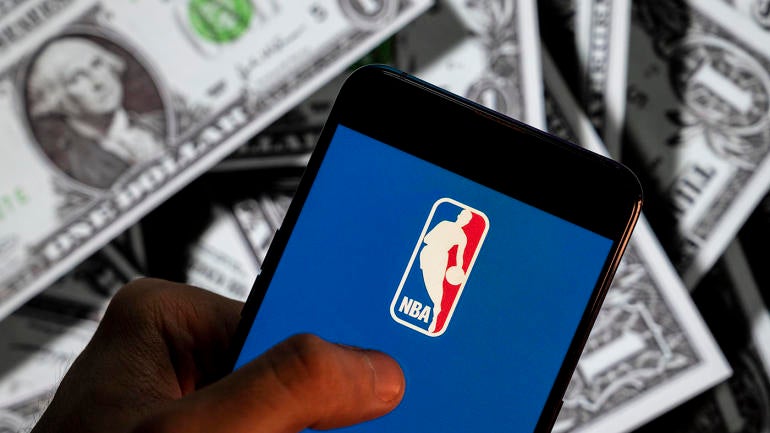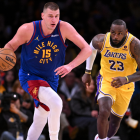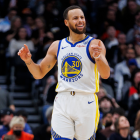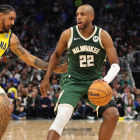
The NBA and its players agreed to a new seven-year collective bargaining agreement at the start of April, which staved off a potential lockout after the conclusion of this season. Several major changes to the CBA include a minimum-games threshold for awards like MVP and All-NBA. There's also the introduction of the in-season tournament that will begin in the 2023-24 season. And of course, there's the more technical changes to the luxury tax and player contracts that can be further explained in this convenient "CBA 101" explainer created by my CBS Sports colleague Sam Quinn.
The baseline changes to the CBA have been known for weeks, but now we're finally starting to see some concrete numbers to put things into perspective. As a way to keep track of all this new information coming out, let's break down all the new details emerging about the NBA's new CBA.
End-of-season award requirements
As a way to curb teams from resting players due to load management, the new CBA includes a minimum games-played threshold for major regular season awards. Players who want to be eligible for awards such as Most Valuable Player, Defensive Player of the Year and All-NBA honors must play a minimum of 65 games, per The Athletic's Shams Charania.
Not only is there a minimum number of games required, but players must also play at least 20 minutes across those games, too. The minute threshold ensures that a player can't just check into a game for a few seconds and then sit for the remainder of the game to meet the requirement. There will be some exceptions to both of these rules, for instance if a player suffers a season-ending injury the games played threshold is lowered to 62. Also, if a player has a couple games where he played at least 15 minutes a night, then he won't be disqualified for awards.
This shouldn't impact voting for an award like MVP where each winner of the last 45 years has played at least 70 games. The two times that hasn't happened were during the lockout season in 2012 when the schedule was set at 62 games and in 2020 when the NBA played a shortened 63-game schedule due to COVID-19.
However, for All-NBA teams, these requirements could make things trickier. Last season, Kevin Durant made Second Team All-NBA despite playing 55 games, but he missed time due to injury. The same is true of LeBron James last season, who played 54 games but mostly it was due to rehabbing from an injury. Injuries are going to happen over the course of the season, so the league will have to make several exceptions to these new rules for situations like that.
In-season tournament to take place in December
After years of speculation about an in-season tournament, the league is finally implementing it starting with the 2023-24 season. It's been reported that the tournament will use pool play to determine the final eight teams that will compete in a single-elimination tournament that is expected to take place in December, per ESPN's Adrian Wojnarowski. Much like how the WNBA has the Commissioner's Cup, the league will determine games on the schedule that will count towards qualification for the in-season tournament.
There are still many aspects of it that need to be solidified, but each player on the winning team will receive $500,000, while the second-placed team will get $200,000 per player. The loser in the semifinals will get $100,000 per player and the loser in the quarterfinals will get $50,000 per player. The league hopes that by incentivizing players with cash prizes, it'll make this tournament drum up some more interest in the regular season. We'll see if players care about these games, but any way to make the regular season more exciting is worth a shot.
Major punishments for luxury tax teams
One of the major financial changes to the new CBA is the introduction of a second tax apron that applies to teams that are operating over the league's luxury tax threshold. Currently, teams whose salaries are over the league's maximum salary cap pay a tax for their high spending. If a team crosses a point known as an "apron" more restrictions kick in. For teams who pass that apron threshold, they're unable to use things like mid-level exceptions to acquire players.
However, the new CBA adds in a second apron, which can become even more costly for teams. If a team passes the second apron, which will be set at $17.5 million above the tax line, they will be unable to trade their first-round pick seven years out, per ESPN's Tim Bontemps. If a team proceeds to pass that second apron twice in the following four years, their first round pick will fall to the end of the first round.
For example, if this rule was in place this season the Clippers, Warriors, Bucks, Celtics, Mavericks and Suns would be unable to trade a first-round pick seven years out to acquire a player. In fact, if this second apron was introduced this season, the Mavericks would've been unable to trade their 2029 first-round pick to acquire Kyrie Irving because they are operating at approximately $22.9 million over the tax line.
This new rule basically penalizes teams that are spending a significant amount to build championship contenders. There are still specifics of this that need to be worked out, but this rule change could have huge ramifications on roster building going forward.

CBS Sports HQ Newsletter
Your Ultimate Guide to Every Day in Sports
We bring sports news that matters to your inbox, to help you stay informed and get a winning edge.
Thanks for signing up!
Keep an eye on your inbox.
Sorry!
There was an error processing your subscription.
No extra money for teams under the minimum salary floor
It used to be that all of the teams around the league who weren't paying luxury taxes got a nice little lump sum of cash each season from the teams paying that tax. That will still be the case, but with an extra restriction. Now, teams who are below the minimum salary floor won't receive that tax payment, per ESPN's Bobby Marks. The salary floor is the minimum amount of money each team must spend on players, and this season that minimum was set at roughly $111.3 million. If this rule was in place this season, the San Antonio Spurs would've missed out on a hefty $15.2 million payment as they spent just $101.5 million on their roster.
This rule will help in discouraging teams from building rosters meant to tank, because as you can see they would be missing out on quite a bit of money if they don't hit the minimum spending. The one issue we could see with this rule, though, is a team like the Spurs who are rebuilding could throw a one-year deal to a player worth $15 million to hit that minimum. Nothing is solidified yet, and perhaps the CBA will have a rule to combat that potential loophole, but it's easy to see how a team could try and work the system to get that tax distribution every season.






















